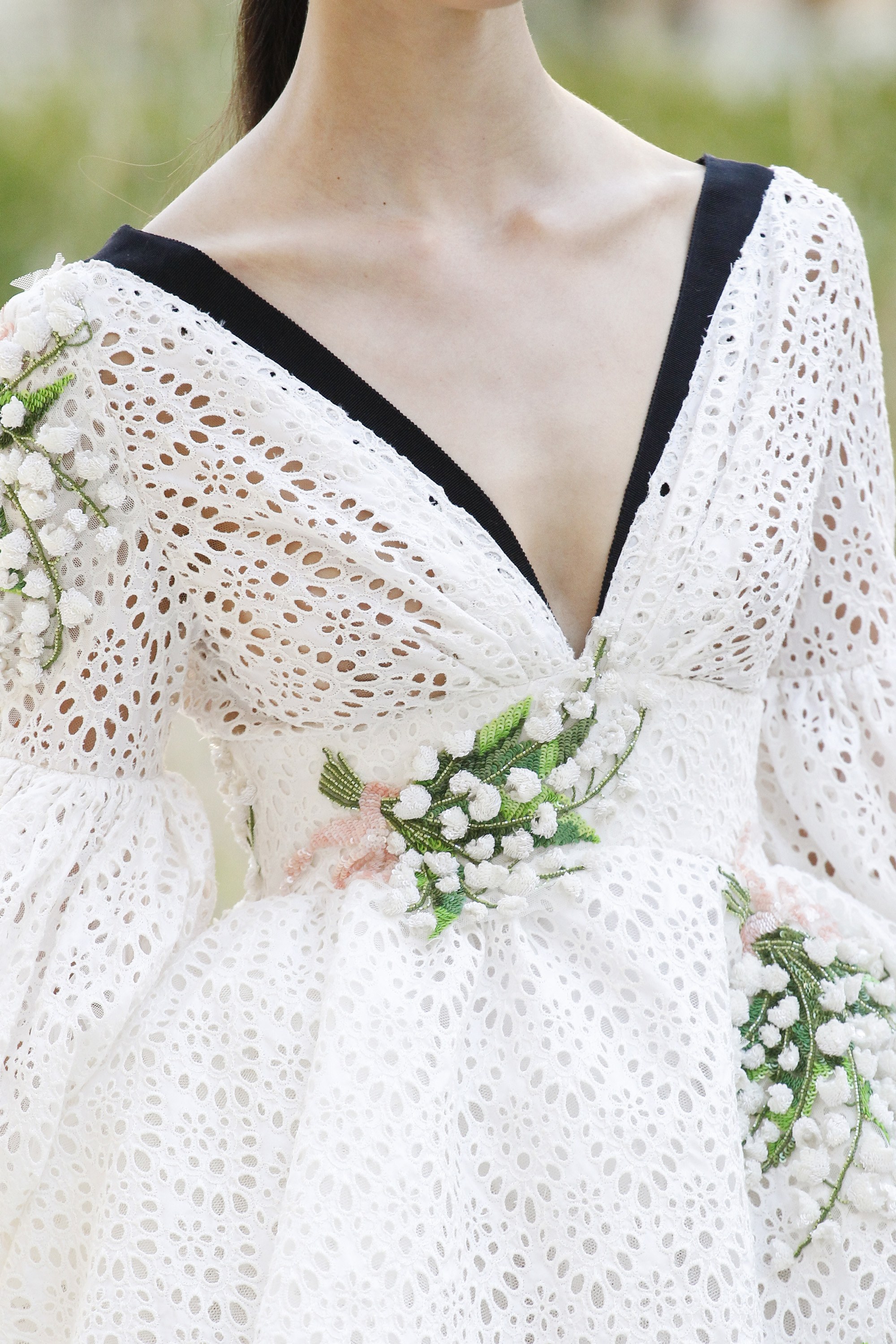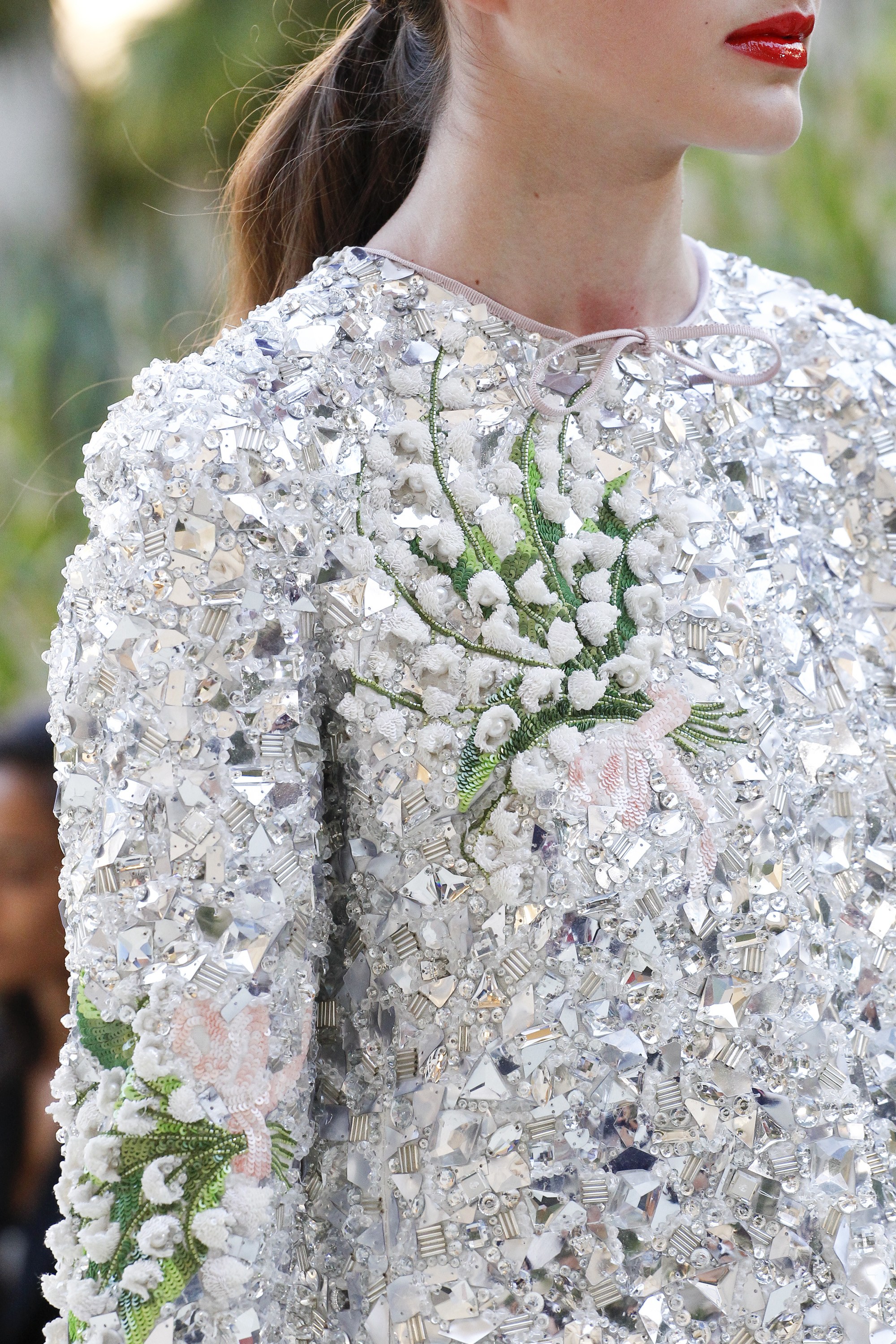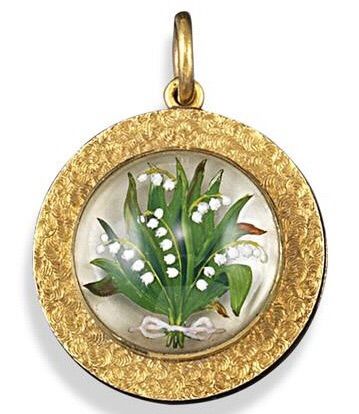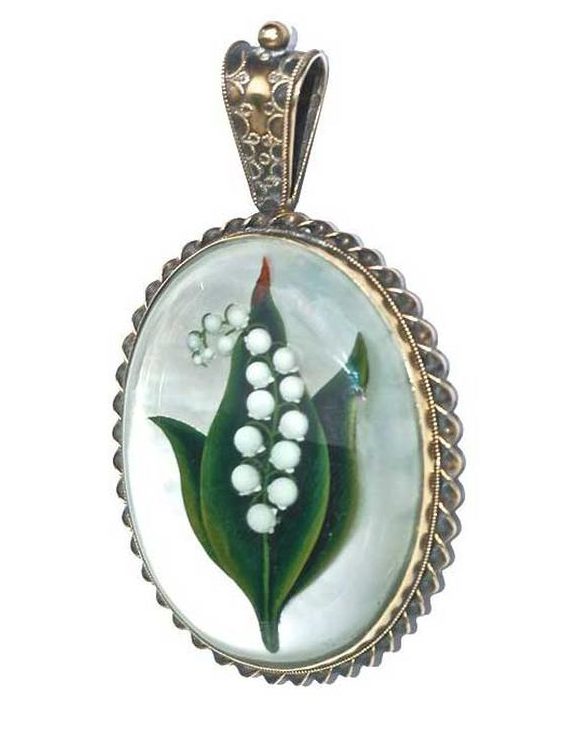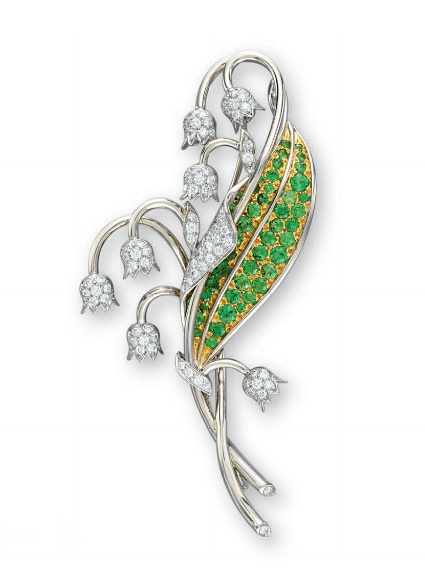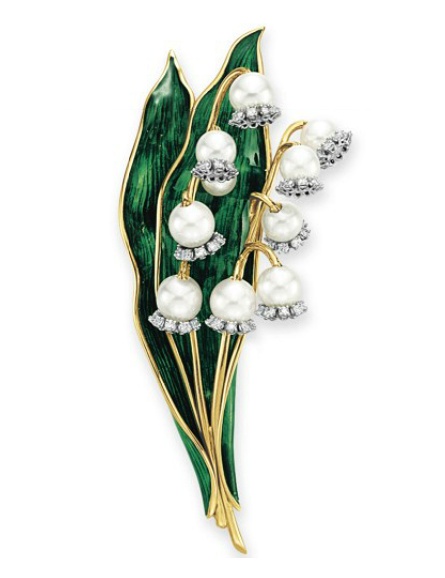The Lily Of The Valley-A Popular flower from Runway to Renowned Jewelry Houses
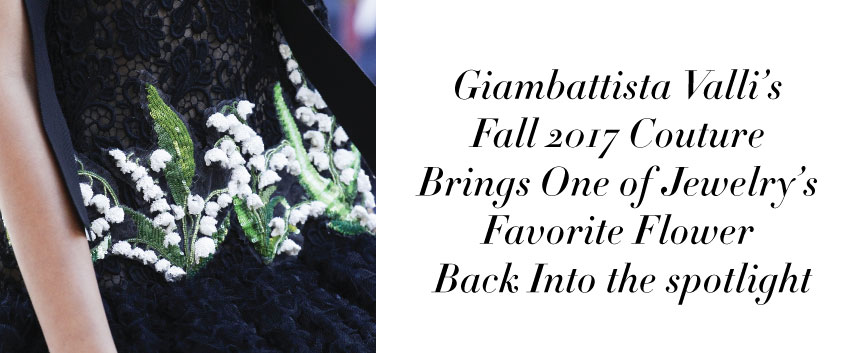
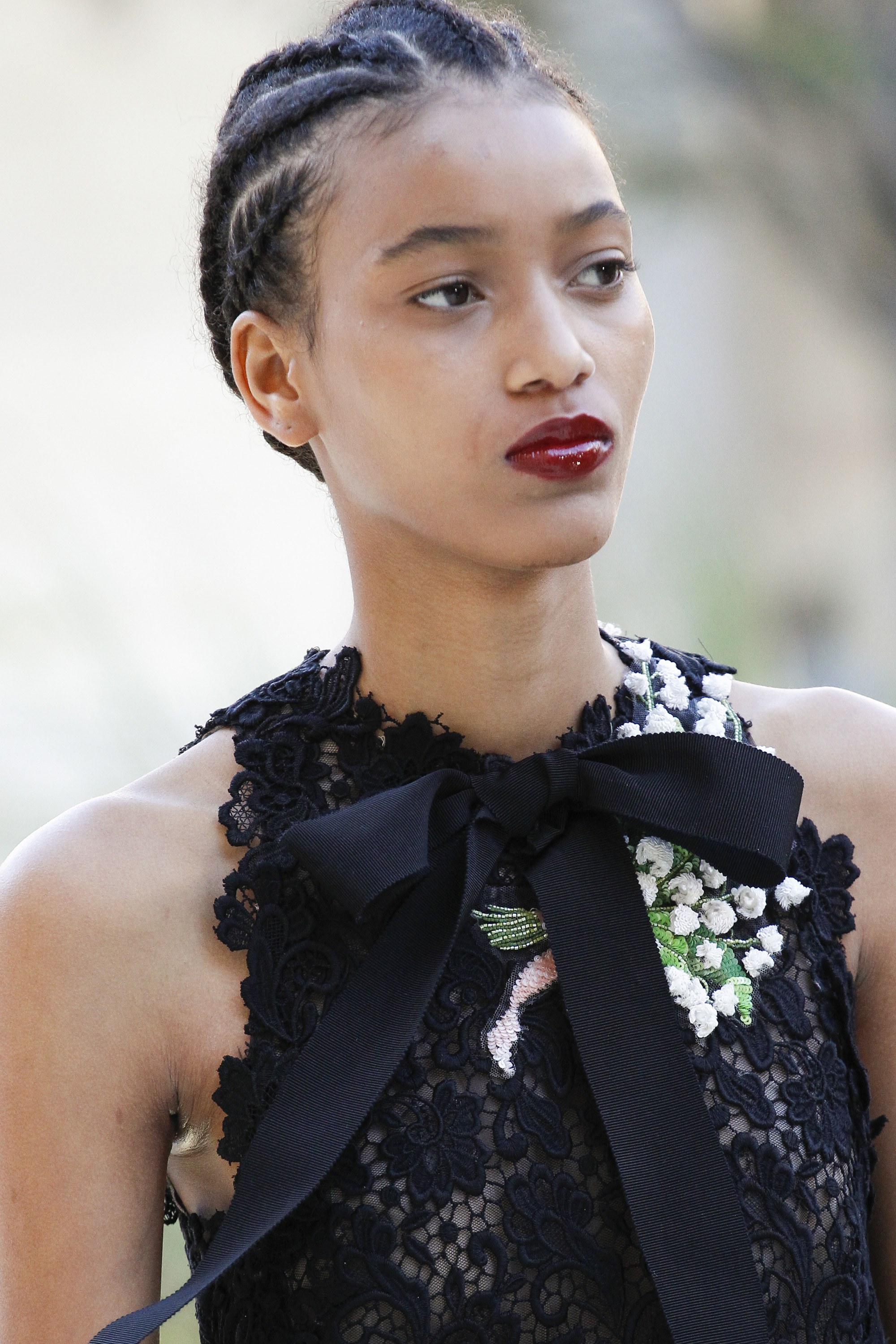
Runway photos courtesy of Giambattista Valli Couture
I always am awed by the Giambattista Valli Couture Shows. His nod to the beauty and glamor of the past, in hand-stitched and impeccable and sublimely feminine embroideries, laces, sensual chiffons and layers of tulle are fit, draped and cut to perfection. And, his collaborations with renowned jewelry companies such as Buccellati (read here) and in his recently fall 2017 Couture runway show, a selection of vintage David Webb, Bulgari and more… from Eleuteri are alway right on the mark.
But in addition to the array of wide vintage cuffs and layers of necklaces accessorizing the show, it was his garden of floral delights on the fall 2017 Couture runway, in which the dresses and gowns felt almost lifelike in all-over embroideries and placed appliqués that had my heart quickening in anticipation to see the next model stride down the catwalk in everything from wildflowers to roses. It was during this pageant of botanicals that he brought one of jewelry’s most beloved flower back into the spotlight— the lily of the valley.
From the seamlessly elegant interpretations of Giambattista Valli on the catwalk, here we take a stroll through the jeweled gardens of various renditions of lily of the valley throughout history.
As early as the 1500’s of King Charles IX of France started the tradition of giving the real flower of lily of the valley as a porte-bonheur—a good luck charm.
In 1819 that Louise Cortambert, under the pseudonym Madame Charlotte de la Tour, published what was likely the first dictionary of floral meanings, entitled Le Language des Fleurs. The book was translated into English in 1820 and, by the early Victorian era, sourcebooks and illustrated dictionaries were also published.
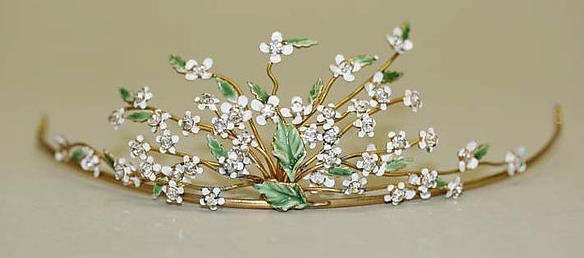
Courtesy of ©MET MUSEUM, Tiara of Lily of the Valley, American or European 1910, Gift of Margaret Tasher Smith, 1990
Enhanced by gemstones with similar symbolism, the language of flowers blossomed into jewelry, which recreated the beauty of nature in a three-dimensional art form. It spoke to sentiments that ranged from friendship to the most passionate of love.
- Kunsthandel Inez Stodel’s reverse painted crystal Victorian pendant.
- Rowan and Rowan reverse painted crystal pendant, sterling silver, Victorian
The lily of the valley’s meanings are simple and rich with the most basic of life’s desires— sweetness and a return to happiness. The message and beauty of the flower popularized it as an early motif for jewelry.
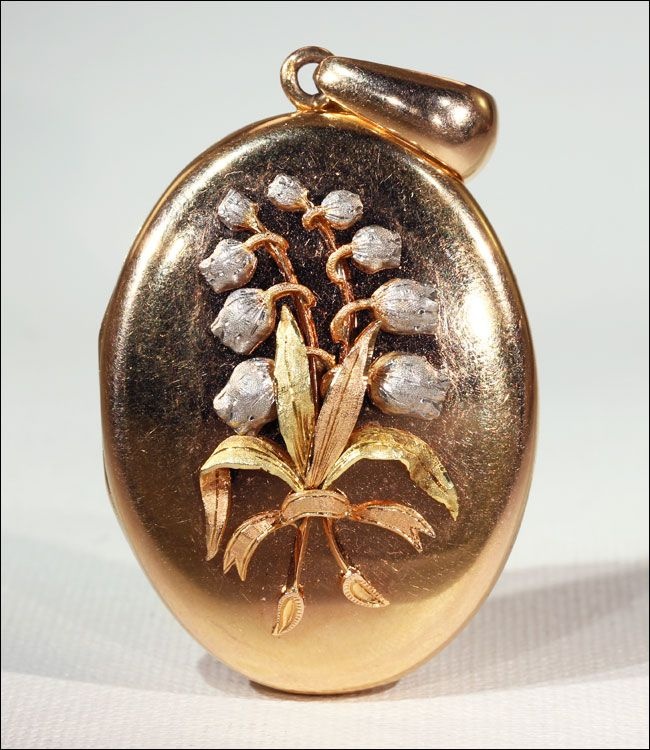
Victorian Sterling’s Victorian locket of two-tone gold and sterling silver
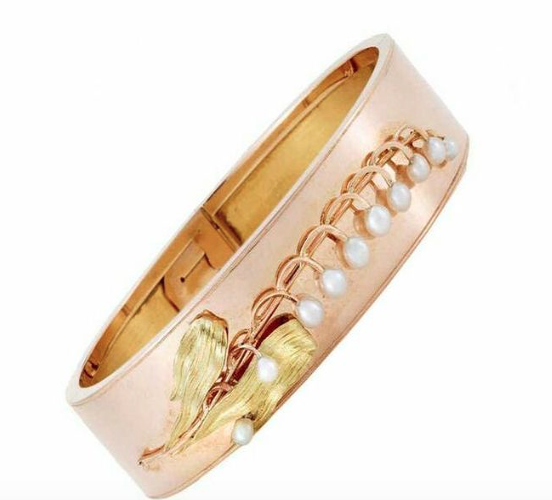
Past Era’s French hinged bangle, circa 1880
For anyone who is passionate about a jeweled flower, it’s always delightful and enchanting to see the delicate multiple scalloped quivering bell shapes and long green sprigs captured and transformed into precious metals, vibrant stones and vivid enamel work from the 18th century through the present day.
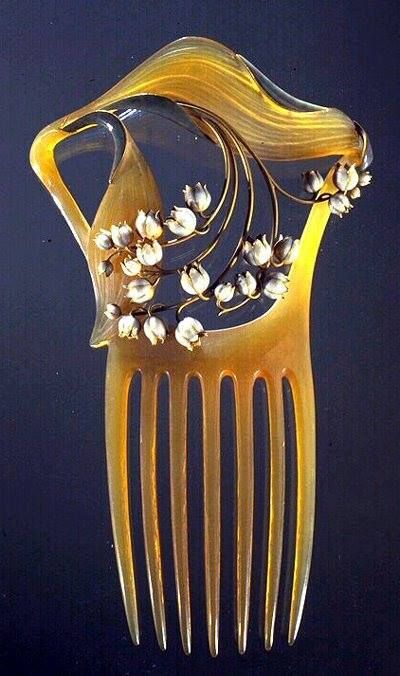
Renee Lalique Art Noveau hair comb
Lily of the Valley was and still is one of the most popular of botanicals in jewelry and has been interpreted during Napoleonic and Victorian times, throughout the Art Nouveau period and by such houses as Chaumet, Faberge, Lalique, Van Cleef & Arpels, Tiffany & Co., Verdura, Joel Rosenthal for Jar, Michele Della Valle and more.
- 20th Century Tiffany & Co brooch diamond, gold and dematoid brooch. photo courtesy of ©Christie’s.
- Verdura enamel pearl and diamond brooch designed in 1965
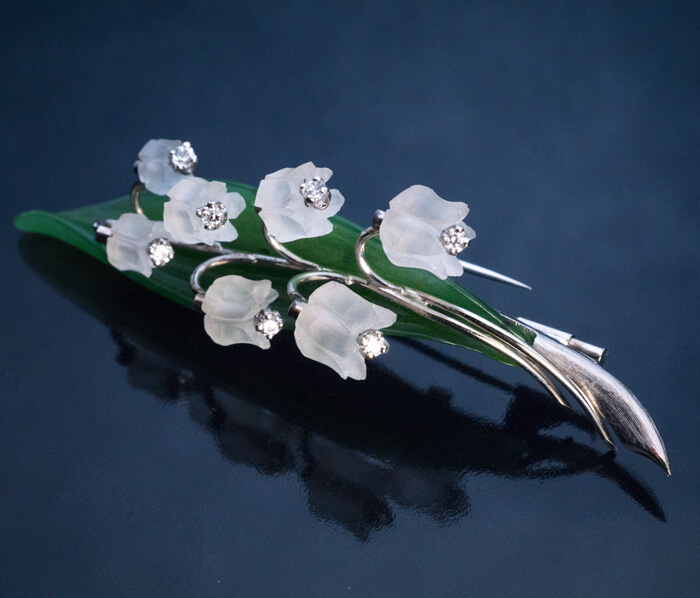
Romanov Russia’s enamel, rock crystal and diamond brooch, Austrian, circa 1950s
Like King Charles IX, another Frenchman, designer Christian Dior thought of lily of the valley as his lucky charm. After he wore one in his buttonhole for his first runway show, to major success in 1947, he interpreted it throughout his career. In her first Dior High Jewellery collection, Victoire de Castellane designed a lily of the valley necklace in homage to what became the symbolic flower of the house.

Victoire de Castellane necklace for her first Dior High Jewellery Collection in 1999. Photo courtesy of Dior.
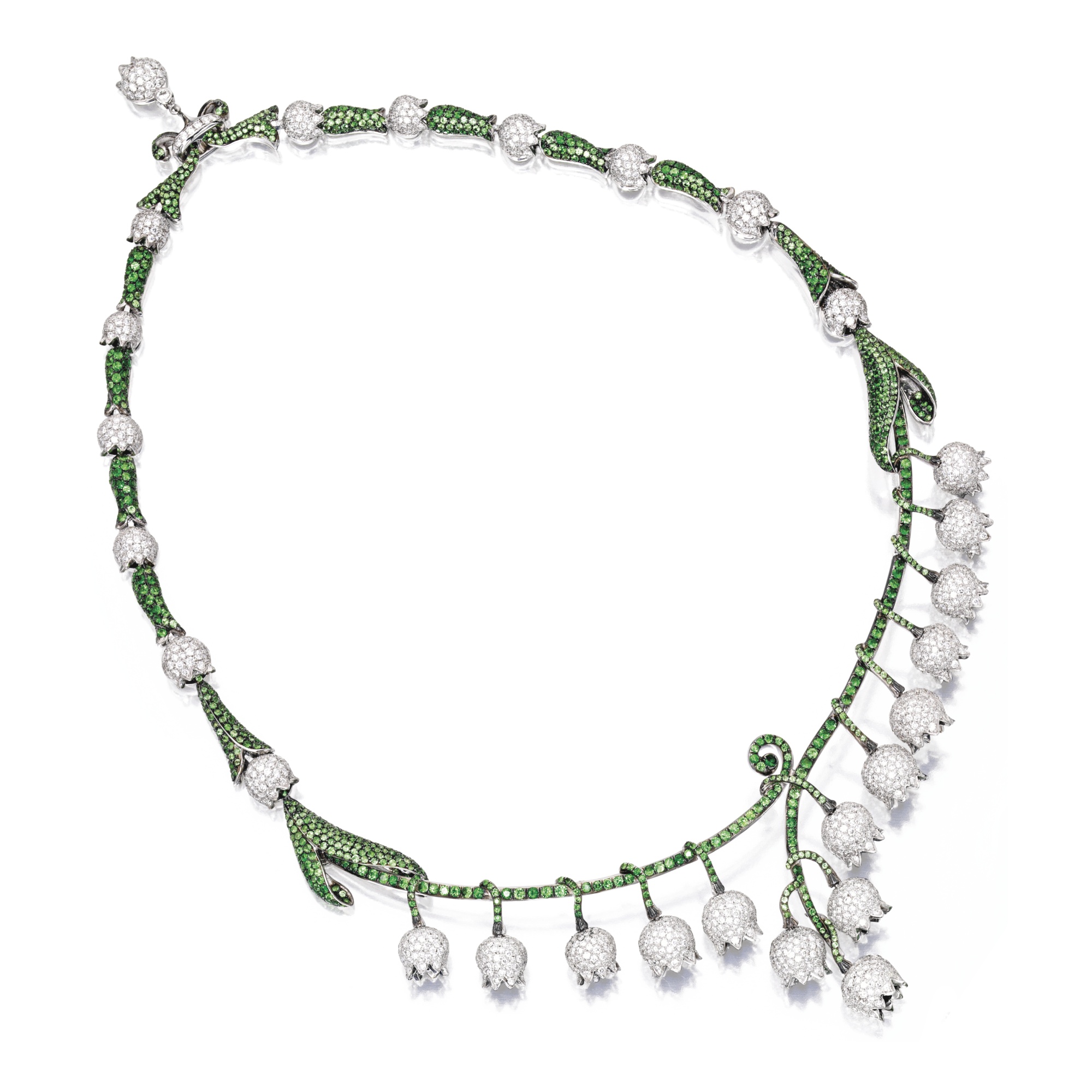
Michele della Valle’s necklace of 18K gold and tsavorite garnets. Photo courtesy of ©Sotheby’
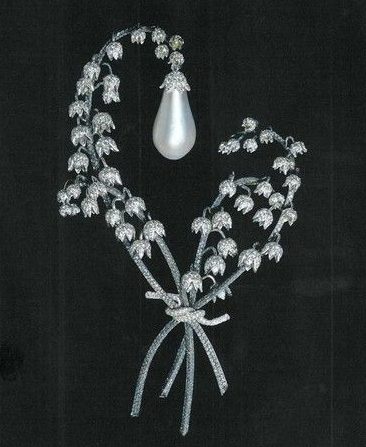
Jar diamond and drop pearl brooch. Photo courtesy of ©Met Museum
In keeping with symbolism, may all of my readers- find the sweetness and the return to happiness, always, that this lovely flower suggests.
Note: Many of the photographs are archival and no longer for sale.
Similar Stories:
JEWELRY CONTINUES TO CONVEY THE LANGUAGE OF FLOWERS IN SENTIMENT AND IMAGINATION
THE MEANING AND SYMBOLISM OF HEART JEWELRY THROUGHOUT HISTORY
SEVEN MEANINGFUL MOTIFS IN VICTORIAN JEWELRY (AS POPULAR TODAY AS THEY WERE THEN)

